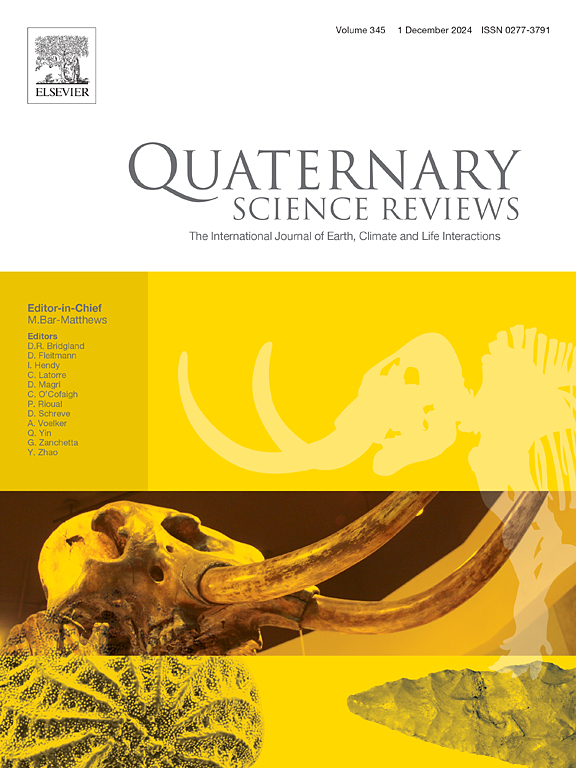气候变化对青藏高原南部晚全新世植被变化的影响大于人类活动
IF 3.2
1区 地球科学
Q1 GEOGRAPHY, PHYSICAL
引用次数: 0
摘要
青藏高原是世界上最大的高寒草地生态系统之一,在全新世晚期受到气候变化和人类活动的双重影响。然而,这些草原植被变化的主要驱动因素是气候变化还是人类活动仍然存在争议,特别是在青藏高原南部(STP)。在这里,我们提供了来自STP的高分辨率植物岩记录,揭示了过去~ 3600年间相对稳定的长期草地组成。此外,我们使用结构方程模型(SEM)研究了过去~ 3600年间草地变化的7个潜在驱动因素对STP的相对重要性:降水、温度、大气CO2浓度、火灾、人类影响指数(HII)、耕作和畜牧业活动。结果表明,降水是草地组成变化的最主要驱动因素,人类活动的影响有限。虽然我们的研究结果强调了气候变化在驱动高寒草地组成变化中的重要作用,但在未来的评估中应考虑人类活动日益增加的影响。本文章由计算机程序翻译,如有差异,请以英文原文为准。
Climate change was more important than human activity in late Holocene vegetation change on the southern Tibetan Plateau
The Tibetan Plateau (TP) is one of the world's largest alpine grassland ecosystems, and it has been influenced by both climate change and human activities during the late Holocene. However, the dominant driver of vegetation change in these grasslands, whether climate change or human activity, remains controversial, particularly on the southern Tibetan Plateau (STP). Here, we present a high-resolution phytolith record from the STP, which reveals the relatively stable long-term grassland composition during the past ∼3,600 years. In addition, we used Structural Equation Modeling (SEM) to investigate the relative importance of seven potential drivers of grassland change on the STP over the past ∼3,600 years: precipitation, temperature, atmospheric CO2 concentration, fire, human influence index (HII), cultivation and pastoralism activity. The results indicate that precipitation was the most important driver of changes in grassland composition, whereas the effect of human activities was limited. While our findings highlight the significant role of climate change in driving changes in alpine grassland composition, the increasing influence of human activities should be considered in future assessments.
求助全文
通过发布文献求助,成功后即可免费获取论文全文。
去求助
来源期刊

Quaternary Science Reviews
地学-地球科学综合
CiteScore
7.50
自引率
15.00%
发文量
388
审稿时长
3 months
期刊介绍:
Quaternary Science Reviews caters for all aspects of Quaternary science, and includes, for example, geology, geomorphology, geography, archaeology, soil science, palaeobotany, palaeontology, palaeoclimatology and the full range of applicable dating methods. The dividing line between what constitutes the review paper and one which contains new original data is not easy to establish, so QSR also publishes papers with new data especially if these perform a review function. All the Quaternary sciences are changing rapidly and subject to re-evaluation as the pace of discovery quickens; thus the diverse but comprehensive role of Quaternary Science Reviews keeps readers abreast of the wider issues relating to new developments in the field.
 求助内容:
求助内容: 应助结果提醒方式:
应助结果提醒方式:


